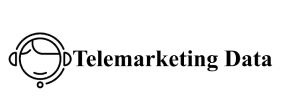When targeting C-level executives, tailoring your lists by company size is a powerful way to enhance the precision and effectiveness of your outreach. Executives at startups, mid-sized companies, and large enterprises have different priorities, challenges, and decision-making processes. Building C-level lists segmented by company size allows you to customize your messaging and solutions to better match the needs of each audience segment, increasing engagement and conversion rates.
Why Segment by Company Size?
Company size often correlates with budget capacity, organizational structure, and purchasing power. For example, startups and small businesses typically have leaner leadership teams with executives who wear multiple hats, prioritizing c level executive list growth and agility. Mid-sized companies often focus on scaling operations and optimizing processes, while large enterprises deal with complex hierarchies and prioritize risk management, compliance, and innovation.
Segmenting your C-level lists by these categories helps you understand the context in which executives operate and tailor your sales and marketing efforts accordingly. It also prevents one-size-fits-all approaches that can feel irrelevant the future of marketing automation or off-putting to recipients.
How to Build C-Level Lists by Company Size
Start by defining clear company size categories—such as small (1-100 employees), medium (101-1000 employees), and large (1000+ employees). Use firmographic data from trusted sources like LinkedIn Sales Navigator, ZoomInfo, or Apollo.io to filter contacts accordingly. These platforms allow you to set parameters based on employee count, revenue, or market segment.
After filtering by company size, further refine your list by industry, geography, search engine optimization mails and job title to align with your ideal customer profile. Verify and enrich contact details with email validation and data enrichment tools to ensure accuracy.
Benefits of Size-Based Segmentation in Outreach
Segmented lists enable highly relevant, personalized messaging that resonates with executives’ unique challenges. For example, when reaching out to startup CEOs, focus on agility and cost-effective solutions. For large enterprise CIOs, emphasize security, scalability, and compliance.
This approach increases response rates, reduces bounce rates, and improves overall campaign ROI. Size-based segmentation also helps prioritize leads, ensuring your sales team focuses on opportunities that best fit your product or service offering.

